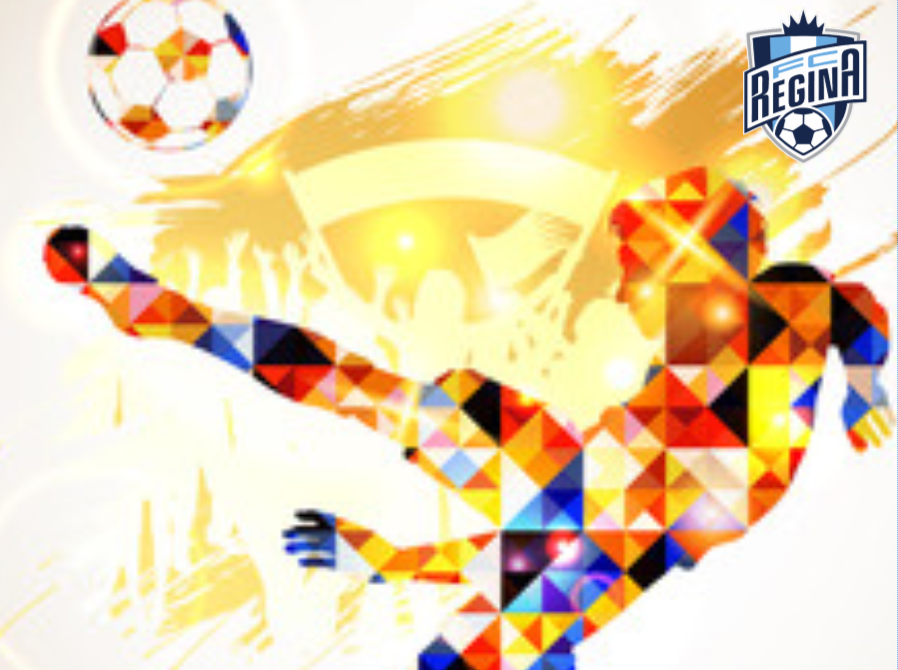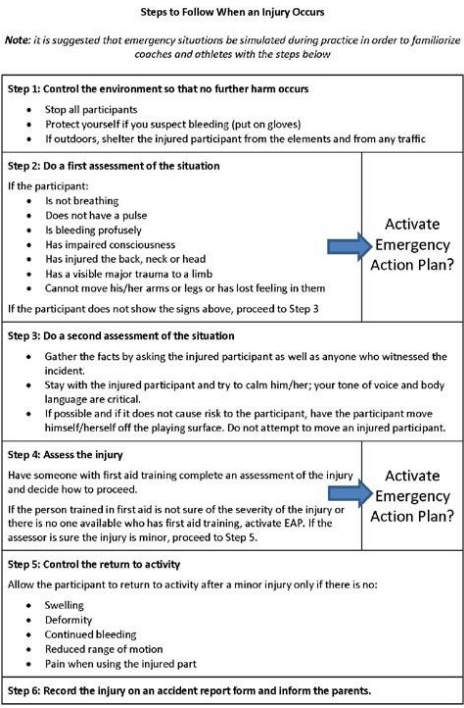Player Safety

Player Safety
Player Safety:
From the FIFA Laws of the Game, Law 4 pertains to the players’ equipment and states:
- Safety - A player must not use equipment or wear anything that is dangerous to themselves or another player (including any kind of jewelry).
Law 4 outlines the basic compulsory equipment to include shin guards, which must be made of rubber, plastic or similar suitable material and must provide reasonable protection. As such, shin guards must be worn during all SSA sanctioned games.
Jewellery Policy:
Players are not permitted to wear anything that is dangerous to themselves or other players. All items of jewelry (necklaces, rings, bracelets, earrings, leather or rubber bands, etc.) are strictly forbidden and must be removed.
- Using tape to cover jewelry is not acceptable.
- Medical alert bracelets may be worn but must be either made of Velcro or similar soft material or covered with a sweatband.
- Match officials are permitted to wear a watch or similar device for timing the match.
Other equipment & Head Covers:
All items of clothing or equipment are subject to the inspection of the match official.
Non-dangerous protective equipment, for example headgear, facemasks and knee and arm protectors made of soft, lightweight padded material is permitted as are goalkeepers’ caps and sports spectacles.
Where head covers (excluding goalkeepers’ caps) are worn, they must:
- be black or the same main colour as the shirt (provided that the players of the same team wear the same colour).
- be in keeping with the professional appearance of the player’s equipment.
- not be attached to the shirt; not be dangerous to the player wearing it or any other player (e.g. opening/closing mechanism around neck).
- not have any part(s) extending out from the surface (protruding elements).
Insulin Pump:
An insulin pump is designed to ensure that the player maintains a proper blood glucose level during the game. An extended period without infusion of insulin may result in hyperglycemia (excess sugar in the blood).
Law 4 states that a player may not use equipment that is dangerous to themselves or another player. This is further expanded upon in the interpretations of the Laws of the Game whereby it is advised that players may use equipment that has the sole purpose of protecting the individual physically providing that it poses no danger to the individual or any other player.
A player wearing an insulin pump because of a medical condition is permitted to play providing they have received written medical clearance and are able to provide the match official with a note indicating such. The pump itself must not present a danger to the individual or any other player.
Blood Policy:
If bleeding occurs where other participants may be exposed to blood, the individual's participation must be interrupted until the bleeding has been stopped. The wound must be cleansed with antiseptic and securely covered.
All clothing soiled with blood must be replaced prior to the athlete resuming training or competition. Clothing soiled with blood and other body fluids must be washed in hot, soapy water.
If an athlete leaves the field, has their injury treated and covered and wishes to re-enter the match in another, differently numbered jersey, that replaces a blood-stained jersey, they may re-enter only after the match official has been advised of the change of number.
All equipment and surfaces contaminated with blood and other body fluids should be cleaned with a solution of one-part household bleach to nine parts water. This solution should be prepared fresh daily. This is particularly important on the artificial turf of indoor arenas.
While cleaning blood or other body fluid spills, the following must be done:
- Wear waterproof gloves
- Wipe up fluids with paper towels or disposable cloths
- Disinfect the area
- Place all soiled waste in a plastic bag for disposal
- Remove gloves and wash hands with soap and water
Other wounds must be reviewed by medical personnel, including abrasions and all skin lesions and rashes on athletes, team personnel and match officials. All wounds, skin lesions and rashes must be confirmed as non-infectious and be securely covered prior to the athlete starting or continuing participation.
Injury Assessment Protocol:
The following injury assessment protocols were developed as a part of the Canada Soccer/NCCP coach education program. Further information on the use of this protocol is available through the Canada Soccer community sport coaching courses.

Return to Play Protocol:
An athlete will not be permitted to return to play while still experiencing symptoms.
An athlete will not be permitted to return to play without medical clearance from a healthcare professional.
Once medically cleared by a healthcare professional, the athlete can begin the return to play protocol.
The return to play protocol is a step-wise process that requires patience, attention and caution. Each step is a minimum of 24 hours. The protocol is as follows:
- Step 1: No Activity, Only Complete Rest
- Limit school, work and tasks requiring concentration. Refrain from physical activity until symptoms are gone for a minimum of 24 hours. Once symptoms are gone, a healthcare professional, preferably one with experience managing concussions, should be consulted before beginning a step wise return to play process.
- Step 2: Light Aerobic Exercise
- Do activities such as walking or stationary cycling. The player should be supervised by someone who can help monitor for symptoms and signs. No resistance training or weight lifting. The duration and intensity of the aerobic exercise can be gradually increased over time if no symptoms or signs return during the exercise or the next day; however, there should be no cognitive load (e.g. responding to commands, linking tasks together, while limiting stimulus from the external environment like opponents) during this phase.
a Symptoms - Return to rest until symptoms have resolved. If symptoms persist, consult a healthcare professional.
b No Symptoms - Proceed to Step 3 the next day.
- Step 3: Sport Specific Activities
- Activities such as running can begin at step 3. There should be no body contact or other jarring motions such as high speed stops or kicking; however, cognitive loads can begin to be added during this phase.
a Symptoms - Return to rest until symptoms have resolved. If symptoms persist, consult a healthcare professional.
b No Symptoms - Proceed to Step 4 the next day.
- Step 4: Begin Drills without Body Contact
- During this phase, the cognitive load can be high (e.g. remembering plays, reacting to opponents, etc.)
a Symptoms - Return to rest until symptoms have resolved. If symptoms persist, consult a healthcare professional.
b No Symptoms - The time needed to progress from non-contact exercise will vary with the severity of the concussion and with the player. Proceed to Step 5 only after medical clearance.
- Step 5: Begin Drills with Body Contact (i.e. Full practice)
- Symptoms - Return to rest until symptoms have resolved. If symptoms persist, consult a healthcare professional.
- No Symptoms - Proceed to Step 6 the next day.
- Step 6: Game Play
Taken from SSA Section Thirteen/ Risk Management/ Policies and Procedures Manual
